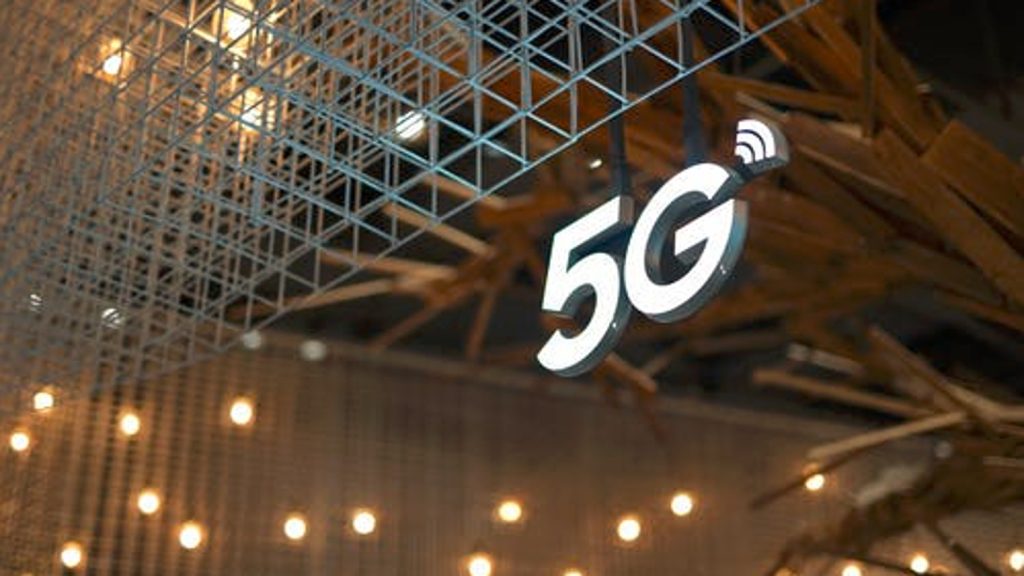In 2022, 5G technology will open the doors to more digital twin deployments and more effectively link real-world data with the design and engineering process, writes UK5G’s Vicki DeBlasi
In 2020, the UK manufacturing industry accounted for £191 billion of output and 2.7 million jobs, with average wages 13% higher than the rest of the economy. But the sector is facing significant challenges in the aftermath of COVID-19, amid shifting markets and a looming skills gap. Effectively planning and designing processes and plants has become more complex, and companies can no longer rely on always having an expert on hand to deploy operations in person.
5G could transform the sector, facilitating more efficient and effective ways of working. For a start, it will enable better and more informed decision-making.
By increasing the number of sensors that can be deployed, 5G networks can facilitate the creation of live digital twins, replicating the entire manufacturing environment digitally. This allows for more thorough testing of product and plant designs, without wasting valuable time or money.
Processes can also be analysed in greater detail and maximised for both efficiency and sustainability. No more second guessing what might happen if you made a certain change; with digital twins, you can run theoretical scenarios in a risk-free environment, using real-world data.
Many businesses may feel that they have already made the necessary investments in technology and connectivity but the speed, volume and reliability of 5G is unmatched.
Fifth-generation connectivity will ensure manufacturing technicians and engineers are able to collaborate quickly, remotely and more effectively than ever before in the design and planning of plants and processes – and it is the UK economy that will reap the benefits.
5G in action
UK vehicle battery manufacturer Hyperbat is using 5G to deliver a virtual reality digital twin proof-of-concept (POC).
Hyperbat design and engineering teams will be able to virtually walk around and interact with three-dimensional, life-size objects in real time, via a single, selfcontained device.
Employees in different locations will be able to build a 1:1 scale physical product on the factory floor, review designs in real time, explore form factors such as maintenance and crash detection of an electric vehicle, and retrofit high-performance batteries into specific dimensions.
The key enabler is the high speed, low latency and large data-handling capabilities of a private 5G network. Jeremy Spencer, 5G Innovation Senior Manager, BT Enterprise Unit, who has led the POC development, says: “The 5G digital twin solution is a powerful reminder that 5G connectivity and edge compute is very much here now, delivering real business benefits.”
He continues: “We have seen how 5G connectivity, combined with the latest technology, can produce incredible efficiency gains which are so important in boosting the UK manufacturing sector in a post-Covid recovery era.”
Digital twins enable manufacturers to determine how best to streamline a production environment before physically changing any processes
According to a survey from LNS research, 25% of manufacturing executives surveyed said they believe a digital twin could help increase throughput, while Hexagon found that 30% of manufacturing executives believe a digital twin would reduce costs.
Digital twins – benefits
Digital twins enable manufacturers to determine how best to streamline the production environment before physically changing any processes.
Designing in a digital realm before implementing in the physical world increases efficiency, productivity and reduces operational risk. This delivers several benefits, including a potential 10% reduction in rework, which not only has financial implications, but also improves worker satisfaction.
Additionally, it can enable an environmentally friendly 10% reduction in scrap, according to analysis from Hexagon.
What’s more, as a part of the UK5G Testbed and Trials Programme, 5G Factory of the Future is using 5G and mixed reality to reduce design costs, improve productivity and increase outputs.
The consortium is creating a shared hybrid reality space that will be used in a variety of ways by their teams, not least in supporting the design process.
Critical discussions can not only happen more quickly and easily, but travel costs will be reduced by an estimated 65%, arising from worldwide collaboration.
Similarly, 5G-ENCODE is using shared virtual and augmented reality, running over a private 5G network it has deployed within the National Composites Centre.
The technology is being used to support and assist the manufacturing design process and the team anticipates a 20% cost reduction as a result.
From the Industrial Revolution to Industry 4.0, manufacturing has always been a cornerstone of the UK economy. Continuous innovation has been the driving force behind this, yet the need for change has never been greater.
5G provides a solution – and that solution is expected to add up to £6.3bn to the value of the UK manufacturing industry by 2030, according to research from Vodafone.
The powering of digital twins by fifth-generation connectivity is just one of the many ways in which manufacturers can realise this promise.
Get in touch:
Vicki DeBlasi has worked in the tech industry for more than 15 years and believes passionately in the power of technology to solve some of society’s biggest challenges.
Since joining innovation network UK5G as head of marketing in 2020, she has been exploring how 5G can be fully understood and embraced by key industries and sectors. On Twitter, she’s @Mrs_VDB






